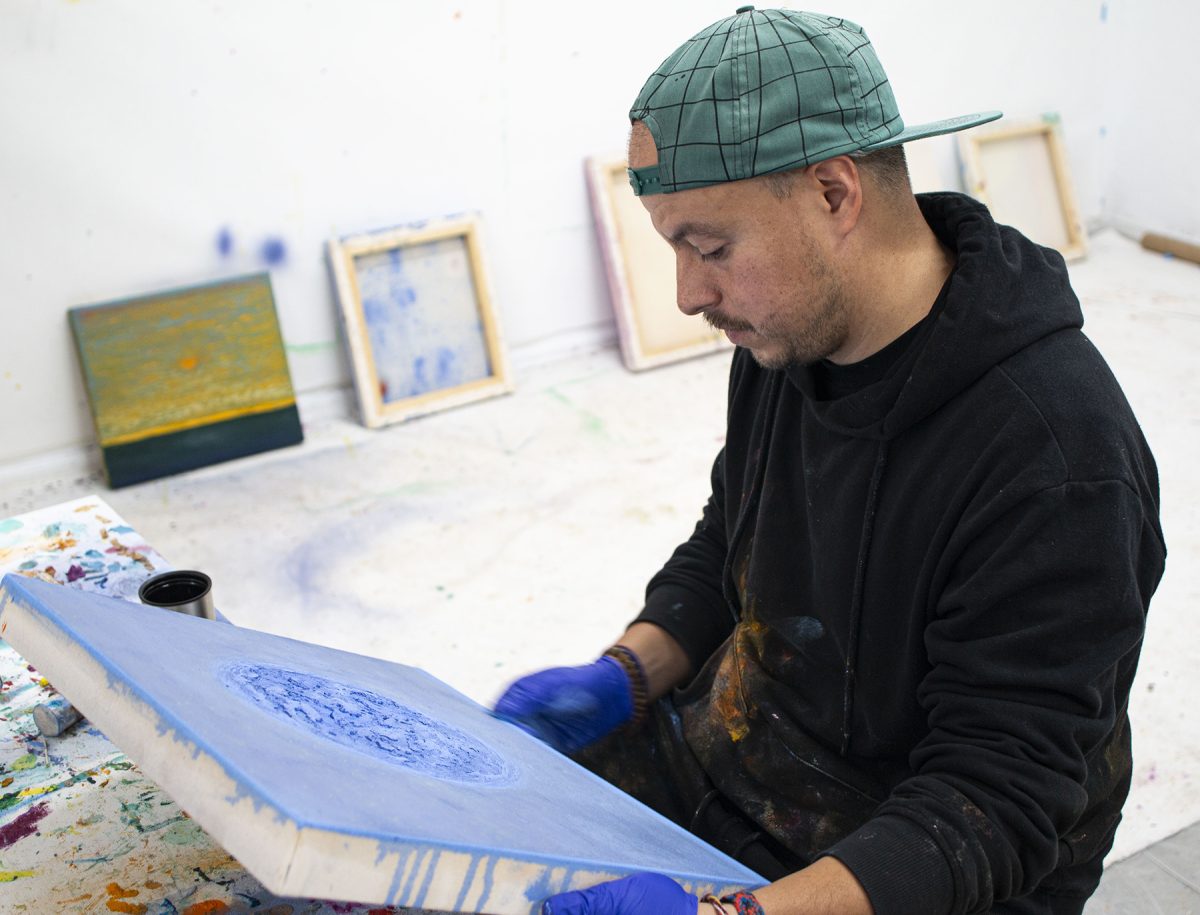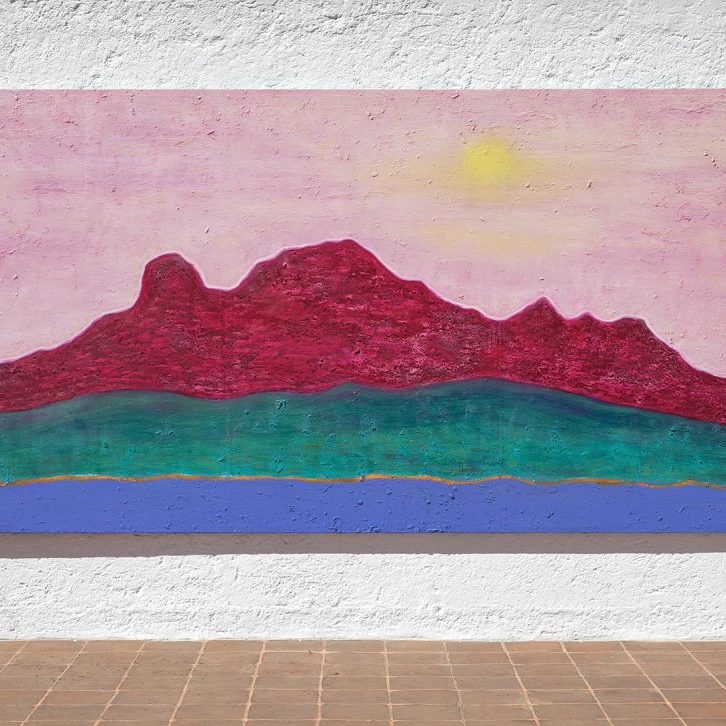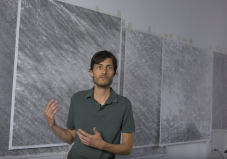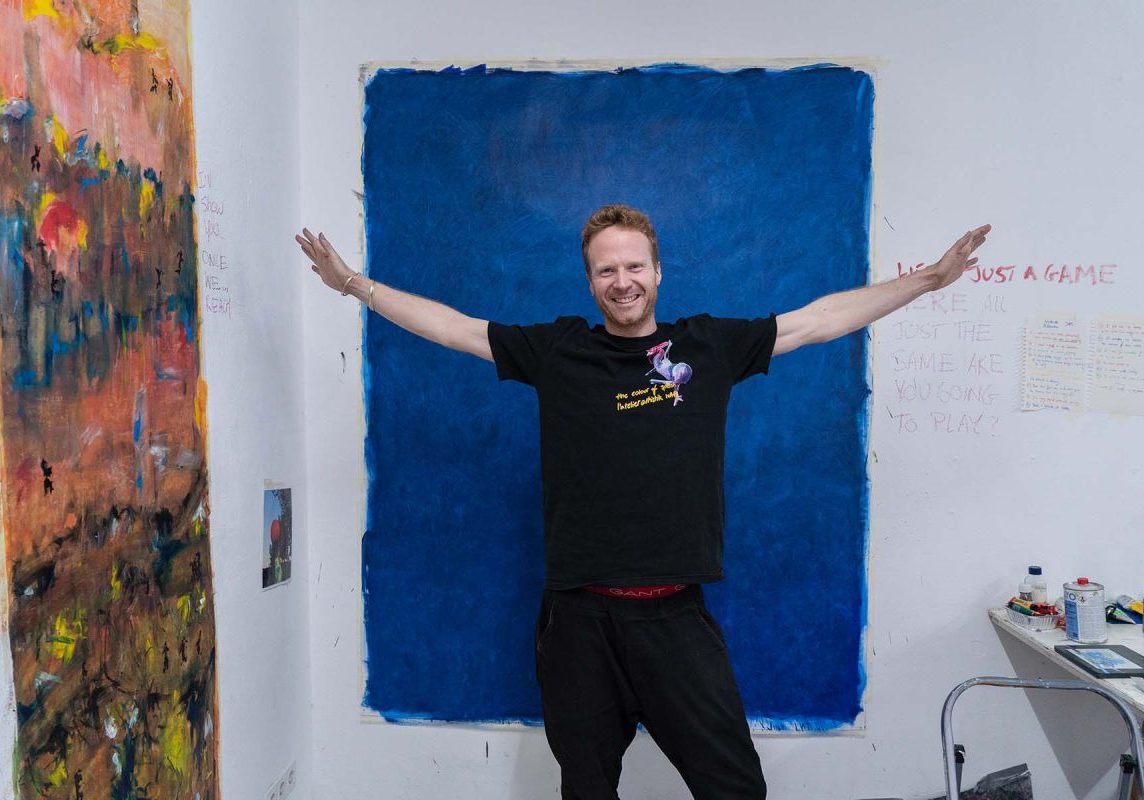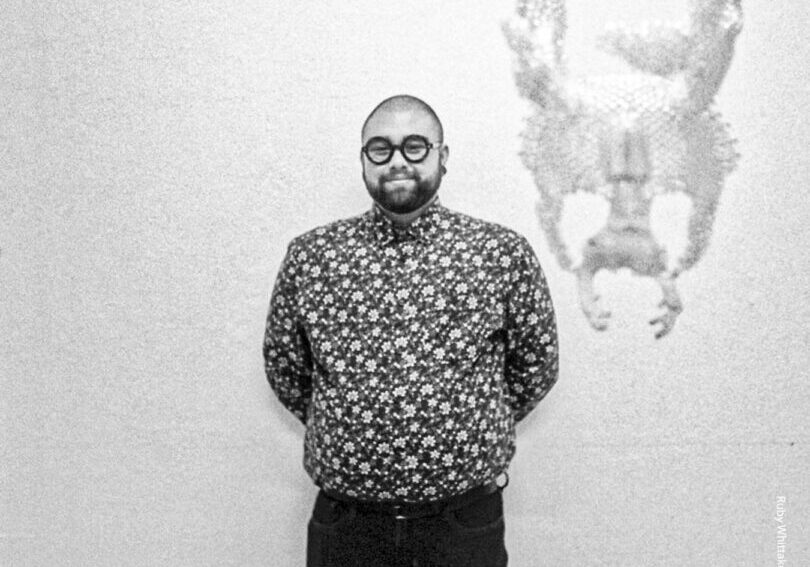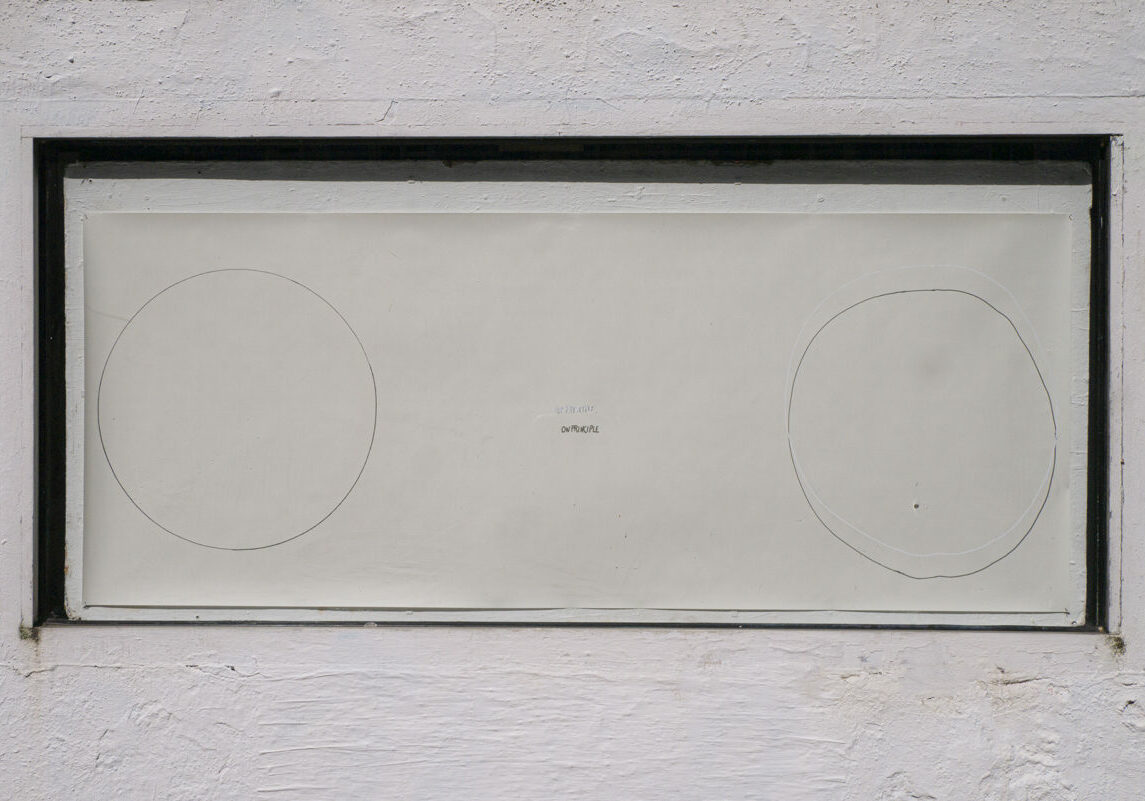Meet the Artist // Yoab Vera
Yoab’s work uses the horizon as a contemplative motif, blending geometric abstraction with intuitive mark-making. Through a meditative process and materials like oil-stick and concrete, he creates textured surfaces that evoke memory. Vera’s art integrates architecture, spirituality, and neuroaesthetics, using color as a tangible essence of life to explore light, time, and the present moment.
During his residency, Yoab will explore Alexander von Humboldt’s Kosmos, focusing on the cultural implications of the flora, fauna, and landscapes he documented, particularly the mountain ranges connecting the Americas and Europe. Through mindful observation and journaling, inspired by Humboldt’s practices, Vera will reflect on the interplay between nature and culture, examining how his work and Franz Eugen Köhler’s illustrations inform identity, environment, and postcolonial narratives, while addressing their relevance to contemporary environmentalism and cultural identity.
Can you introduce yourself and share your background?
My name is Yoab Vera, and I’m from Coyoacán, a neighborhood in Mexico City known for its vibrant colors and serene atmosphere. Coyoacán embodies a sense of wonder and connection, where memories, textures, and colors converge. Although I lived there until I was 18, I’ve spent the last two decades abroad in cities like New York, Los Angeles, Berlin, and Istanbul. I return to Coyoacán every year to work at my studio, and walking through its tree-lined streets and vibrant facades evokes a contemplative pause that informs my work. This sense of harmony and belonging shapes how I approach abstract landscapes, focusing on contemplation through texture and color.
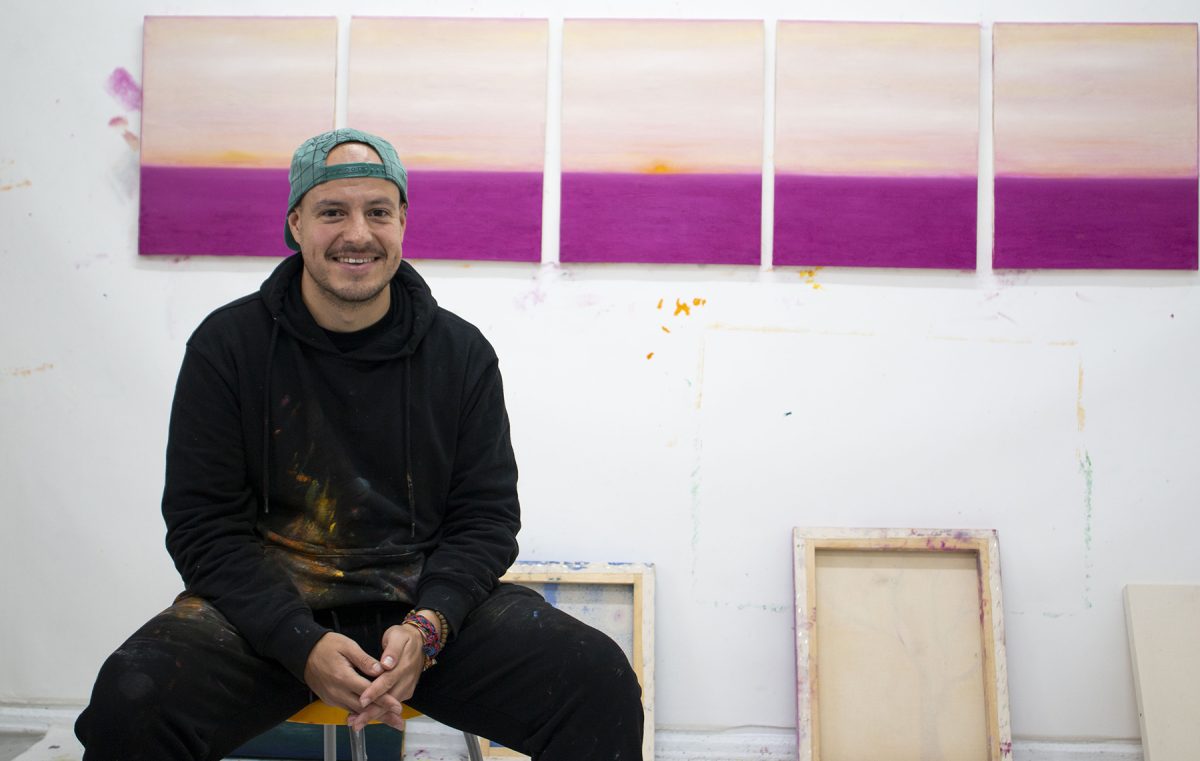
How did you first find your way into painting?
My journey into painting began as a teenager in Coyoacán, where local artists gathered in the town square. Watching them work sparked my curiosity, and I was fortunate to meet a mentor there, Ismael Osorio, who taught me the basics of painting. After highschool, I studied architecture, drawn to its blend of structure and creativity, but my deeper connection to painting soon became clear.
A pivotal moment was visiting High Times, Hard Times: New York Painting 1967–1975 at the Museo Tamayo, where I saw works by Mary Heilmann and Jack Whitten, which opened my mind to the possibilities of abstraction. I transferred to Hunter College in New York to study art and art history, followed by an MFA at UCLA. These experiences, along with traveling, especially a journey through South America I did, deepened my desire to explore contemplation in my paintings.
How did your trip to South America influence your approach to painting?
My trip to South America in 2016 was a turning point in my artistic journey. Particularly, traveling through the Salar de Uyuni, the Atacama Desert, the Andes, and the Pacific coast I formed a deep sensory connection with the landscape. The colors, textures, and vastness of these spaces evoked the same sense of wonder I had as a child in Coyoacán. This realization that landscapes and cities could carry emotional and perceptual resonance reignited my passion for painting, leading me to explore themes of perception, affectivity, and contemplation with a renewed focus on the hybridity between natural and built environments.
Did you study art in school, and how did it shape your approach to painting?
Yes, I graduated with an MFA in painting from UCLA and studied art at Hunter College in New York. At Hunter, I focused on color theory with Robert Swain, which helped me approach painting as both an optical and emotional experience. At UCLA, I worked with Silke Otto-Knapp, Rebecca Morris, Monika Baer and Lari Pittman, whose mentorships deepened my understanding of space, materiality, and sensory-perception.
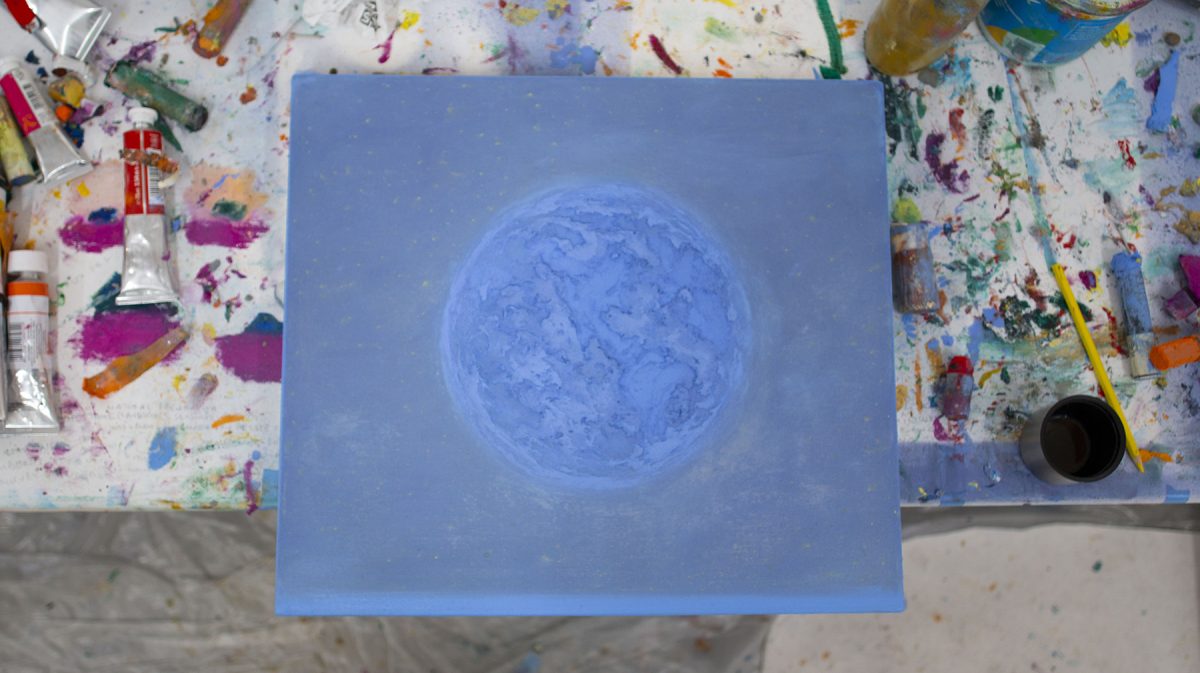
What draws you to the material concrete?
Concrete resonates with the built environments of cities like Mexico City, New York, Los Angeles, and Istanbul. In Mexico City, for example, the interplay between brightly painted walls and unfinished concrete creates a textured, stratified landscape that reflects both cultural resonance and personal memory. Using concrete in my paintings allows me to explore the relationship between built environments and natural forms. The textured layers mimic the stratification of the earth, bridging ecological and contemplative concerns. By combining concrete with oil painting techniques, I create surfaces that invite tactile and sensory engagement.
How did your practice evolve during the pandemic?
The pandemic offered time for reflection and experimentation. Living with my parents in Mexico, I transformed a small room and later a garden space into my studio, incorporating materials from my surroundings—old wood, polystyrene, and garden textures. This shift toward a more physical and intuitive approach led me to use rollers to layer colors in a way reminiscent of house painting. The resulting works became fragments of the landscapes around me, exploring themes of belonging and interconnection.
Do you plan your paintings, and what role do landscapes play in your work?
I rarely plan my paintings in full. They emerge through an intuitive process shaped by my surroundings. Whether it’s the sunsets over the Bosphorus in Istanbul or the garden textures of Mexico City, my environment guides my color palette, textures, and compositions. Landscapes—particularly horizons—are central motifs in my work. Rather than traditional depictions, I use them as structures for contemplation, capturing a sense of pause and interconnectedness that brings us into awareness and vitality.
What themes do you explore in your work?
My paintings explore interconnectedness—between people, places, and the earth. Horizons, sunsets, and landscapes serve as metaphors for memory, belonging, and hope. Using materials like concrete ties my work to the built environments we inhabit, while oil-paint introduces warmth and fluidity. Together, these materials create a dialogue between the tactile and the contemplative, offering moments of pause and reflection within the rhythm of everyday life.
